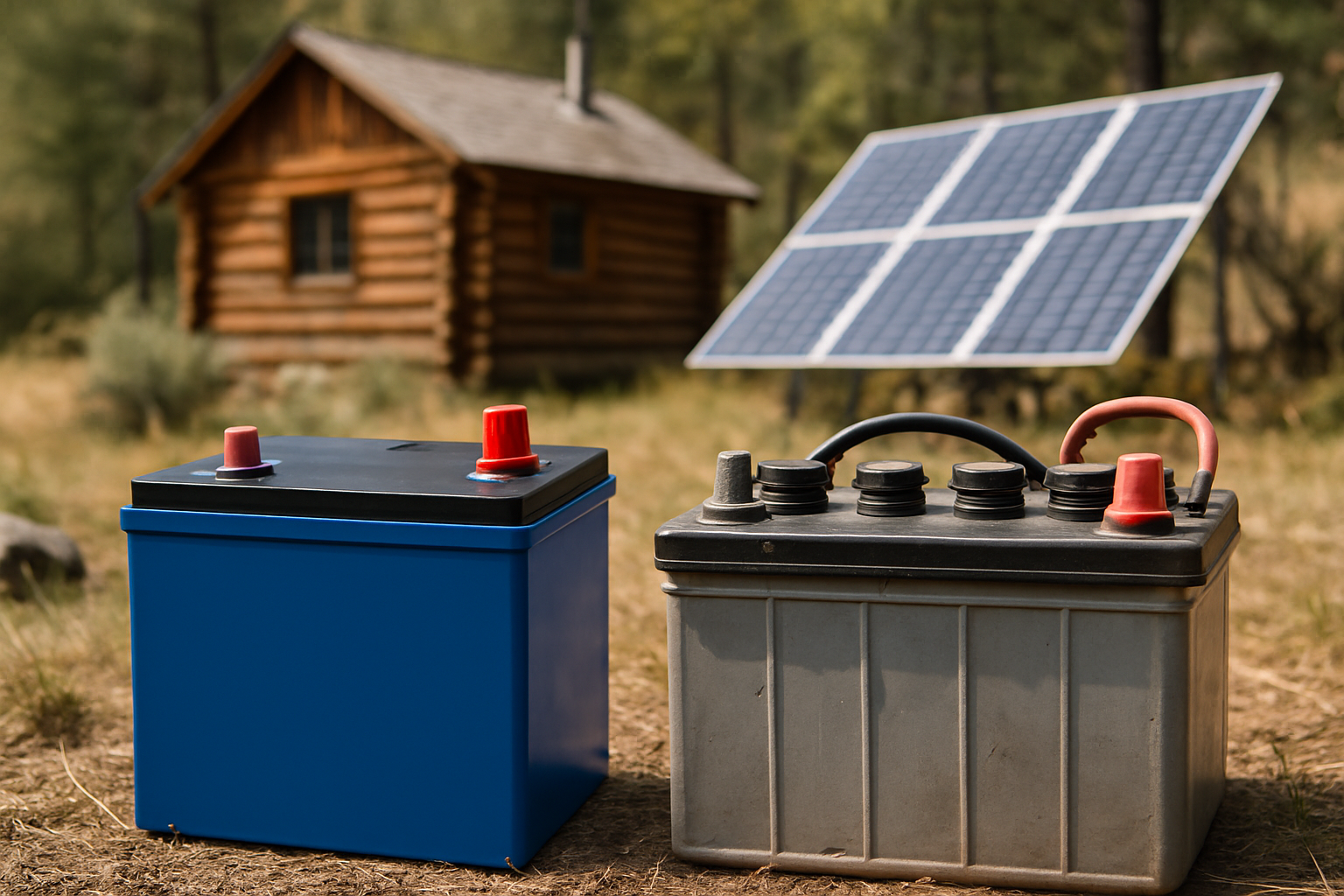For anyone embracing energy independence, an off-grid solar system represents a significant investment in reliability and sustainability. At the heart of many such systems lies the LiFePO4 battery, a robust and efficient power storage solution. These batteries offer a compelling combination of high cycle life, inherent safety, and stable performance, making them a preferred choice for homes, farms, and remote cabins.
However, even the most advanced technology benefits from diligent care. Consistent maintenance ensures your LiFePO4 battery bank operates at its peak, delivering consistent power and extending its operational life for many years. This article outlines nine routine checks you can implement to safeguard your off-grid power supply and maximize your investment.

The Foundation of Off-Grid Power: Understanding LiFePO4 Batteries
Why LiFePO4 Excels in Off-Grid Applications
LiFePO4 (Lithium Iron Phosphate) batteries stand out for off-grid systems due to their superior characteristics. They boast an impressive cycle life, often thousands of cycles, which translates to decades of service. Their chemical composition provides exceptional thermal stability, significantly reducing the risk of thermal runaway compared to other lithium-ion chemistries. Furthermore, LiFePO4 batteries maintain a relatively flat discharge voltage curve, ensuring consistent power delivery until nearly depleted. This stability is crucial for sensitive electronics and overall system reliability in isolated environments. Companies with extensive experience in the solar and energy storage industry focus on manufacturing high-performance, safe, and reliable LiFePO4 batteries to meet these demanding off-grid requirements.
Key Parameters for Monitoring Battery Health
To effectively maintain your LiFePO4 batteries, you must understand the critical parameters that indicate their health and performance. These include:
- Voltage: The electrical potential difference across the battery terminals. It reflects the battery's state of charge (SoC) and overall health.
- Current: The flow of electrical charge into or out of the battery. Monitoring charge and discharge currents helps prevent overcharging or excessive discharge.
- Temperature: The internal and external temperature of the battery. Extreme temperatures can negatively impact performance and lifespan.
A well-designed battery management system (BMS) continuously monitors these parameters, protecting the battery from conditions like overcharge, over-discharge, over-current, and extreme temperatures. For off-grid systems, the ability of battery storage to respond quickly to varying power demands is vital for system stability. For example, battery units can be programmed to sense frequency deviations and ramp to full output instantaneously to provide support, a capability often discussed in the context of grid stability but equally relevant for maintaining a steady power supply in an isolated off-grid setup. According to System Integration of Renewables, energy storage is a smart choice to meet primary frequency response needs, highlighting the responsiveness of battery technology.
Essential Daily and Weekly Vigilance for Your Battery System
1. Visual Inspection: Your First Line of Defense
Regular visual checks are simple yet highly effective. Dedicate a few minutes daily or weekly to inspect your battery bank. Look for:
- Loose Connections: Ensure all cable connections to the battery terminals and busbars are tight. Loose connections can cause resistance, heat buildup, and power loss, potentially impacting the entire system's efficiency.
- Corrosion: Check for any signs of corrosion on terminals or connectors. While less common with LiFePO4 than lead-acid, it is still good practice to clean any corrosion immediately to ensure optimal conductivity.
- Physical Damage: Look for any swelling, cracks, or leaks in the battery casing. While LiFePO4 batteries are robust, external damage can compromise safety and performance.
- Cable Integrity: Inspect cables for fraying, cuts, or insulation damage. Damaged cables pose a fire hazard and can lead to inefficient power transfer.
2. Voltage and State of Charge (SoC) Monitoring
Understanding your battery's voltage and SoC is fundamental. Most off-grid systems include a battery monitor that displays this information. For LiFePO4 batteries, a fully charged cell is typically around 3.65V, and a fully discharged cell is around 2.5V. However, the usable range for longevity is often between 3.0V and 3.5V per cell. Aim to keep your battery's SoC within a healthy range, typically between 20% and 95% for optimal lifespan, avoiding prolonged periods at 100% or below 20%. Many modern off-grid solar solutions integrate advanced monitoring for precise SoC readings.
3. Environmental Conditions: Temperature and Ventilation
Temperature significantly impacts battery performance and lifespan. LiFePO4 batteries generally perform best for discharge between 0°C and 45°C (32°F and 113°F), and for charge, optimal performance is often recommended above 0°C, with an upper limit around 55°C (131°F). Extreme temperatures can accelerate internal chemical degradation and stress the Battery Management System. Ensure your battery bank is in a well-ventilated area, away from direct sunlight or extreme cold. Proper ventilation dissipates any heat generated during charging and discharging, preventing overheating. Consider insulation or heating/cooling solutions if your environment experiences extreme temperature fluctuations.
Monthly and Quarterly Performance Deep Dives
4. Connection Integrity and Torque Check
Beyond visual inspection, a more thorough check of all electrical connections is beneficial monthly or quarterly. Use a torque wrench to ensure all terminal bolts are tightened to the manufacturer's specifications. Vibrations and temperature changes can cause connections to loosen over time, leading to increased resistance, heat, and potential system inefficiency. This meticulous approach helps maintain the active power controllability inherent in modern battery systems, a feature crucial for stable power delivery in any application. Grid Codes for Renewable Powered Systems discusses active power controllability requirements, emphasizing the importance of well-maintained connections for efficient power flow.
5. Battery Management System (BMS) Health Check
Your BMS is the brain of your battery bank, safeguarding it from various electrical faults. Most modern LiFePO4 batteries come with an integrated BMS. Check its status indicators or interface (if available) for any error codes or warnings. A healthy BMS ensures proper cell balancing, overcharge/discharge protection, and temperature management. Some systems allow you to access data logs, which can provide insights into historical performance and potential issues. A robust BMS is key to the long-term reliability of your energy storage system.
6. Cell Balancing Status
Over time, individual cells within a battery pack can drift in voltage due to slight manufacturing variations or uneven usage. The BMS actively balances these cells, ensuring they all reach the same voltage level. While the BMS handles this automatically, it is good practice to periodically check if balancing is occurring effectively. If your system allows, monitor individual cell voltages. Significant discrepancies might indicate a BMS issue or a failing cell, requiring further investigation. Fast frequency response, often provided by battery storage, relies on the healthy and balanced operation of individual battery units to quickly limit frequency deviations, as noted in Grid Codes for Renewable Powered Systems.
Annual Assessments for Long-Term Reliability
7. Capacity Testing and Performance Review
Annually, consider performing a basic capacity test to assess your battery's degradation. This involves fully charging the battery and then discharging it at a controlled rate while measuring the total energy delivered. Compare this against the battery's rated capacity. A gradual decline is normal, but a sudden or significant drop might signal an underlying issue. Keeping records of these tests helps you track performance over time and anticipate when replacement might be necessary. For precise capacity testing, specialized equipment or a qualified technician might be needed. Dynamic stability analysis, using real-time data, helps manage system limits, and similar data collection for off-grid systems can inform maintenance decisions, according to Grid Codes for Renewable Powered Systems.
8. Software and Firmware Updates
If your LiFePO4 battery system or its BMS has smart features, check for available software or firmware updates. Manufacturers often release updates to improve performance, enhance safety features, or fix bugs. Keeping your system's software current can optimize its operation and extend component life. Always follow the manufacturer's instructions carefully when performing updates. These updates can be crucial for maintaining optimal battery performance and compatibility with other system components like solar inverters.
9. System Integration Check
Your battery bank is part of a larger off-grid ecosystem, including solar panels, charge controllers, and inverters. Annually, review the entire system's integration. Ensure the charge controller settings are optimized for your LiFePO4 batteries (e.g., correct charging voltages and absorption times). Verify that the inverter is communicating correctly with the battery system, especially regarding low-voltage disconnects. A cohesive system works more efficiently and prolongs the life of all components. This holistic view of system integration is crucial for maximizing the benefits of renewable energy sources and storage, a concept explored in Getting Wind and Solar onto the Grid.
Sustaining Your Off-Grid Energy Independence
Implementing these routine checks for your LiFePO4 battery bank is not merely a task; it is an investment in the longevity and reliability of your off-grid power system. Consistent attention to these details ensures your batteries perform optimally, providing you with stable, dependable energy for years to come. By proactively monitoring and maintaining your system, you secure your energy independence and maximize the return on your solar investment. Companies specializing in reliable and scalable energy solutions understand the importance of such maintenance for achieving true energy independence.
Frequently Asked Questions
How often should I check my LiFePO4 battery?
Perform visual inspections and monitor voltage/SoC daily or weekly. Conduct deeper connection and BMS checks monthly or quarterly. Annual assessments, including capacity testing and software updates, are recommended for long-term health.
What is the ideal temperature range for LiFePO4 batteries?
LiFePO4 batteries generally operate best for discharge between 0°C and 45°C (32°F and 113°F). For charging, it's often recommended to be above 0°C, with an upper limit around 55°C (131°F). Extreme temperatures can reduce lifespan and performance.
Can I mix old and new LiFePO4 batteries?
Mixing old and new LiFePO4 batteries, or batteries of different capacities or brands, is generally not recommended. It can lead to imbalances, reduce the overall efficiency, and shorten the lifespan of the entire battery bank. Ideally, use batteries of the same age, capacity, and manufacturer.
What are common signs of a failing LiFePO4 battery?
Signs of a failing LiFePO4 battery can include significantly reduced capacity, inability to hold a charge, unusual heat generation, or a Battery Management System (BMS) consistently reporting errors or shutting down the battery prematurely.
Is cell balancing always necessary for LiFePO4 batteries?
Yes, cell balancing is crucial for LiFePO4 battery packs. The integrated BMS in most LiFePO4 batteries actively manages cell balancing to ensure all cells within the pack maintain similar voltage levels. This process prevents individual cells from being overcharged or over-discharged, which is vital for the pack's overall lifespan and safety.





Leave a comment
All comments are moderated before being published.
This site is protected by hCaptcha and the hCaptcha Privacy Policy and Terms of Service apply.